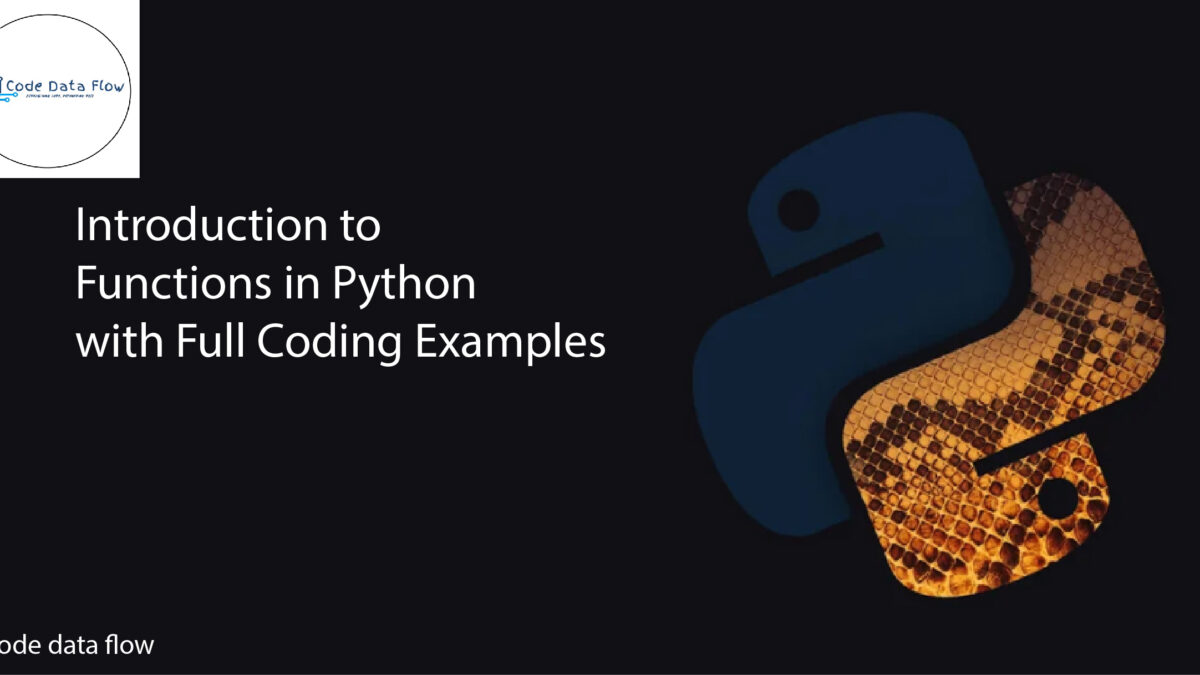
Introduction to Functions in Python with Full Coding Examples
Functions in Python are one of the most powerful building blocks in programming. In this guide, you’ll learn what functions are, why they matter, and how to create them with full coding examples to boost your Python skills.
What is a Function?
An organised, reusable chunk of code used to carry out a single, connected activity is called a function.
Functions provide your program greater modularity and a high level of code reuse.
The def keyword in Python is used to define functions.
Why Use Functions?
Avoid Repetition: Write once, use many times.
Organized Code: Easy to manage.
Makes Programs Shorter and Clearer.
Improves Readability.
Syntax of a Function:
def function_name(parameters):
"""
Docstring explaining the function
"""
# code block
return value
def: Keyword to start a function.
function_name: Name of the function.
parameters: (Optional) Input values.
return: (Optional) Output from the function.def: Keyword to start a function.
function_name: Name of the function.
parameters: (Optional) Input values.
return: (Optional) Output from the function.
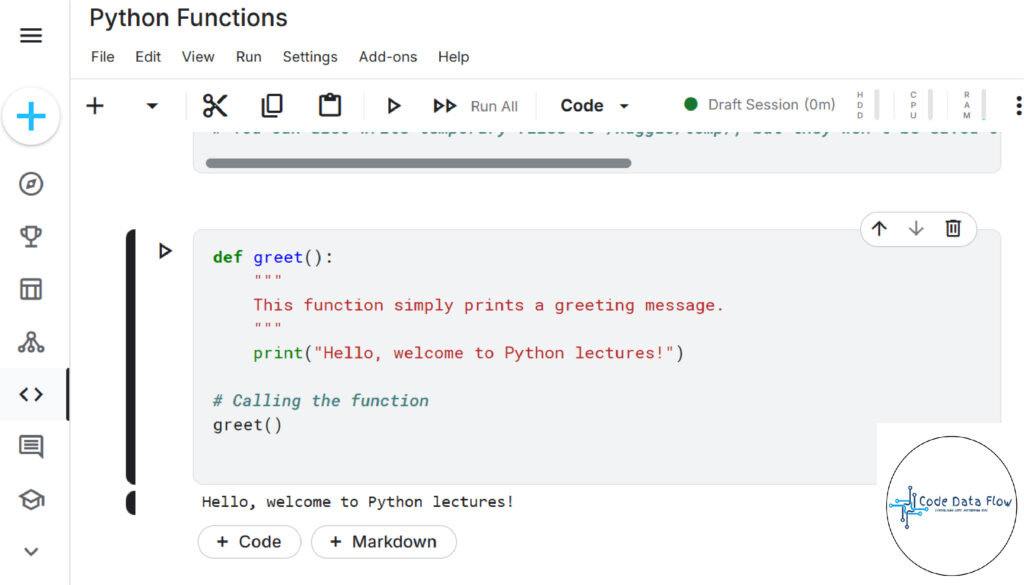
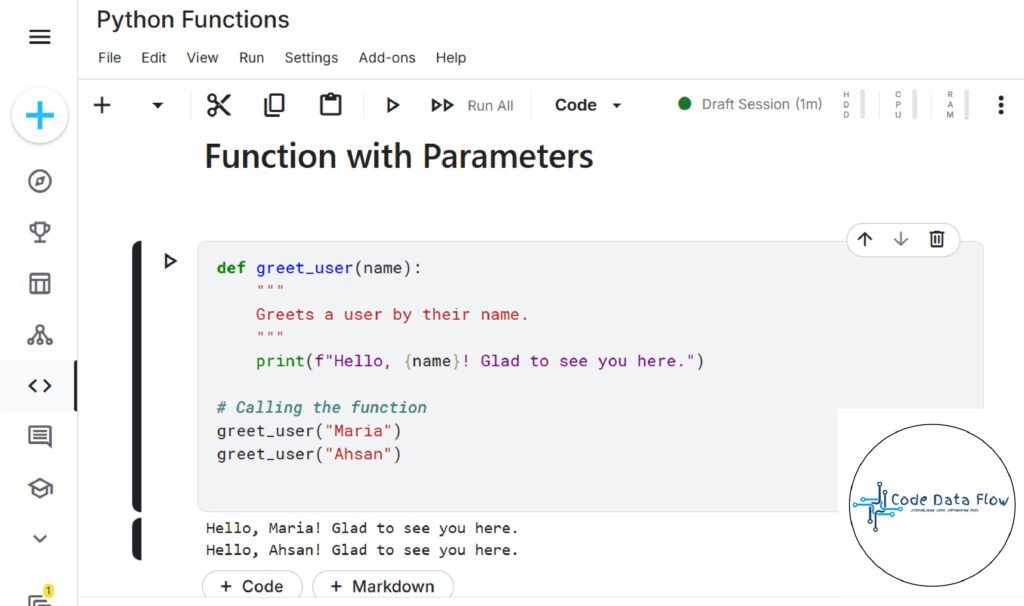
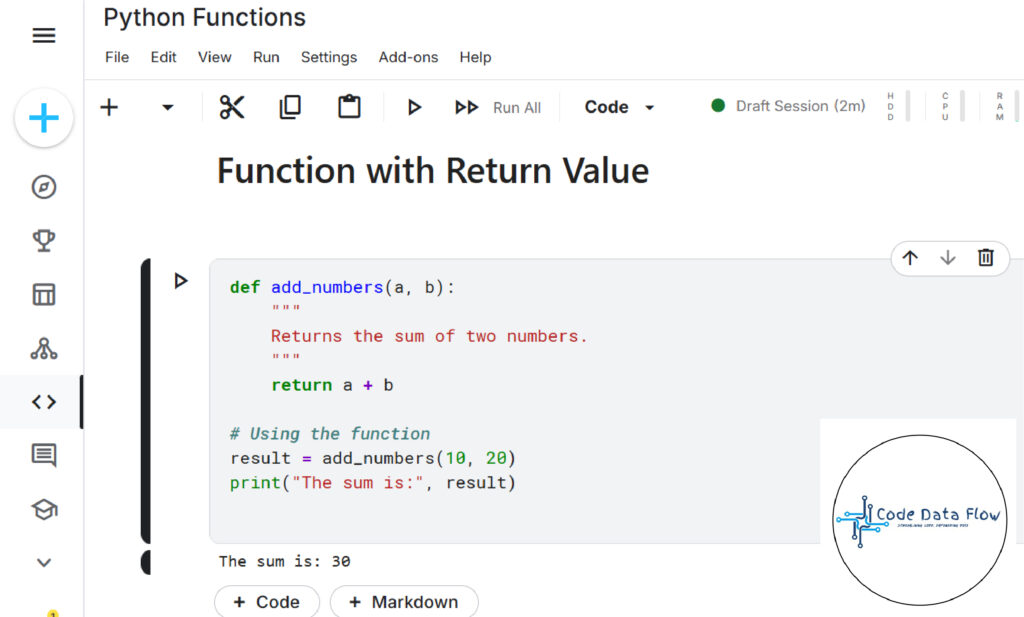
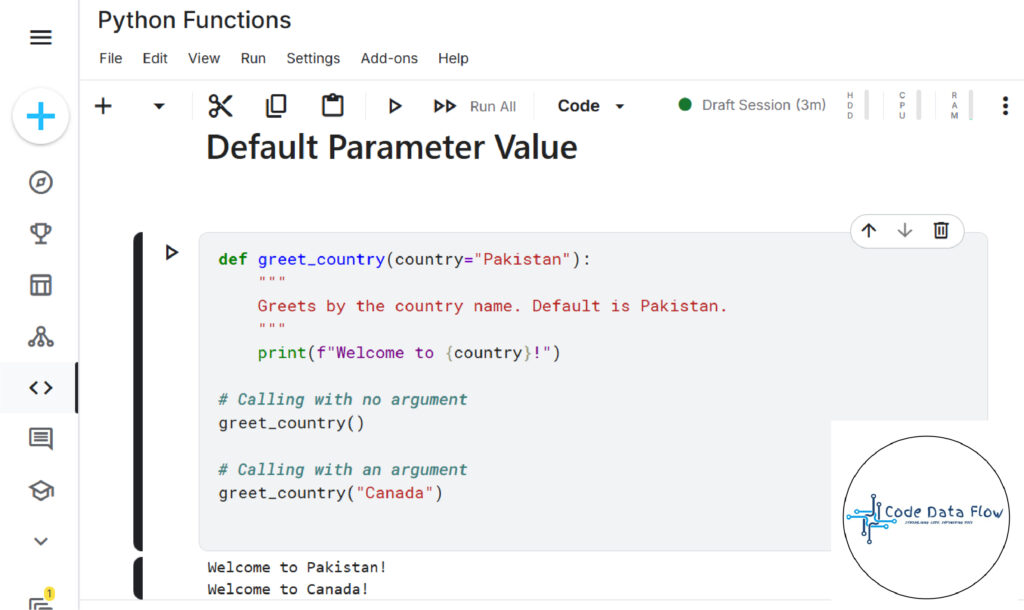
see coding on kaggle
Why Functions are Important in Python:
- Reusability: Write once, use many times.
- Organized code: Easy to understand and maintain.
- Makes programs modular: Break large programs into smaller, manageable parts.
Types of Functions in Python:
- Built-in functions (like
print(),len())
- User-defined functions (functions you create)
Common Mistakes When Writing Functions:
- Forgetting parentheses when calling a function
- Not using meaningful names
Best Practices for Writing Functions:
- Use meaningful names for functions and parameters.
- Keep functions small and focused on a single task.
- Use docstrings to describe what the function does.
- Avoid using too many parameters.
- Return a value if needed instead of just printing inside the function.
Summary of the Lecture:
| Term | Meaning |
|---|---|
def | Defines a function |
| Parameters | Inputs to function |
return | Sends result back |
| Docstring | Describes the function |
| Call | Using the function |